Long-term cruising for a month or more requires a different approach to planning because it’s a step further into a cruising lifestyle rather than a conventional two-three week getaway. For many years we’ve planned typical vacation cruises with an estimated time of departure and a return date and we’ve enjoyed every one of them. But when you think of planning a cruise with an “open-ended ticket” instead of a set return date, you realign the idea of cruising and your options are much broader. When you’re aboard for a longer period of time, you don’t have to return to your home port; you can stay awhile and expand your horizons.
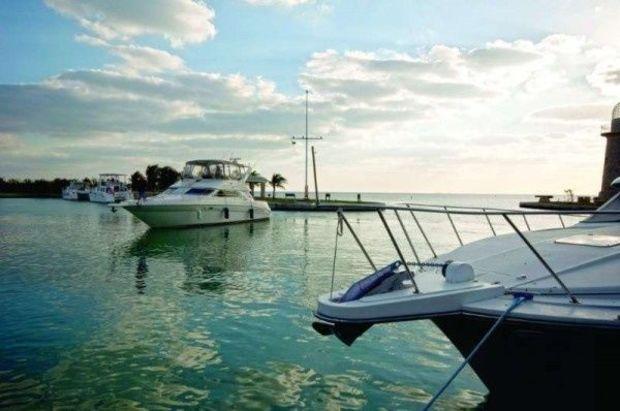
We’ve been thinking outside the proverbial cruising box and enjoyed several long-term cruises and met many others who are doing the same. Here’s what we’ve learned about arranging land lives and cruising for an adventure in progress that’s beyond your immediate home cruising grounds.
Not long ago in Edenton, NC, we met a Kansas couple on a catamaran who took two months to cruise the coast of the Tar Heel state with plans to return the next summer and cruise the Chesapeake Bay. They planned to work their way up the East Coast for many summers to come. As we meet cruisers on our travels, we’re amazed at how clever they are in arranging their lives to accommodate serious cruising time.
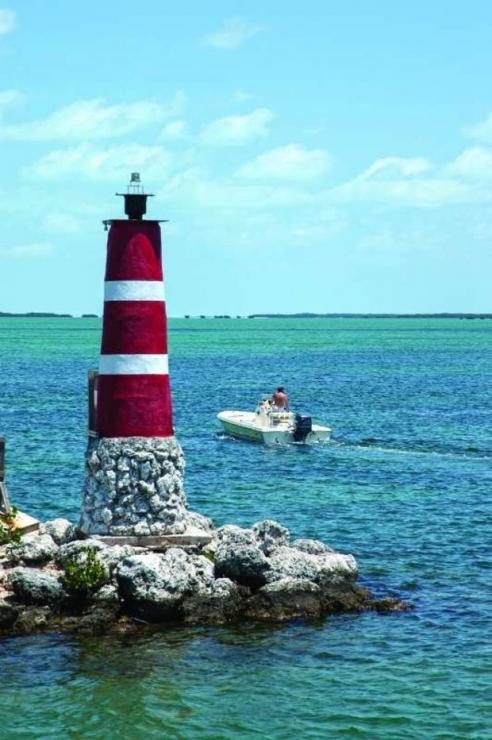
Many cruisers we’ve met doing the Great Loop (‘Loopers,’ we’re often called) were making the 5000-mile cruise in segments over several years instead of one continuous yearlong adventure. Some were Europeans who allocated their free time to doing the Loop, leaving their boat and returning when their work schedule allowed.
A Texas couple we met loved the Great Lakes so much that they spent the summer there, hauled out for the winter in Michigan, and returned the following summer to resume their cruise. Many make the same plans to spend the summer in the Chesapeake Bay where they leave their boat in the fall and return the next spring.
On a recent cruise down the Intracoastal Waterway from our home port on the Chesapeake Bay, we tried something different. We took a one-way passage and enjoyed cruising some of the best the Florida Keys has to offer. We stayed at Boca Chita, Bahia Honda, and Islamorada and anchored in countless coves and keys and then shipped our downeast boat back to the Bay in the spring. We liked it, and all our worries about having a boat transported from Florida to Maryland were relieved when Early Bird arrived safe and sound at our boatyard.
The itinerant cruising style makes it possible to spend quality time in an area. Many like to live on the hook most of the time and use marinas for provisioning and shopping. Others prefer having a home base in a marina where they can get to know an area, easily take their dog for a walk, rent a car for sightseeing junkets, and of course have a safe and permanent place to tie up or leave their boat.
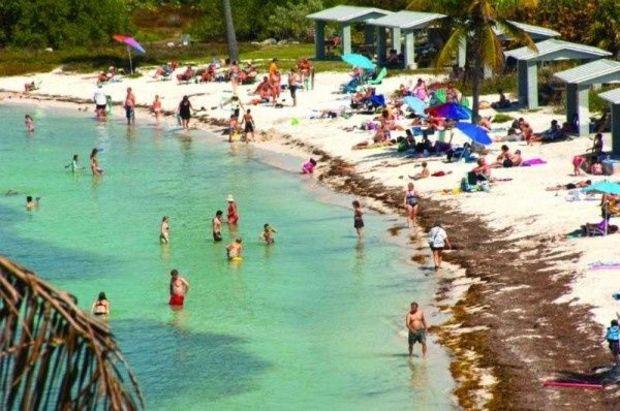
A California couple we know adopted a similar cruising style by wintering in the Bahamas where we met them. In the summer months, when they returned home, they hauled out in Georgia, a safe haven to leave a boat during hurricane season. Come winter they headed back to the Bahamas or Florida Keys.
We have friends who love their home in the Chesapeake Bay during the spring and fall, but spend the summer in Maine, and winter in Florida aboard their boat.
Many of these cruisers are retired but some like us continue to work while cruising, and it’s never been easier to manage a business with cell phone and WIFI connections available almost everywhere.
Tips and Advice:
- Make General Intentions
If you’re reserving a slip somewhere, allow for wiggle room or at least a week extra in the schedule knowing Murphy’s Law seems to thrive on messing up cruise plans. We have “general intentions” of being somewhere and often we need that fudge factor to make up for unforeseen circumstances. When Hurricane Sandy slammed into the east coast in 2013, we spent a long October week in Portsmouth, VA, before we even got to Mile 1 of the ICW. Ask any long-term cruiser and they’ll tell you their engine, air conditioning, holding tank, or refrigeration has gone on the fritz and delayed their plans.
- Avoid Stress
Being flexible is the key to enjoying being aboard which translates to stress-free cruising. Let good weather dictate when you slip the dock lines, not a deadline to meet someone. Often it’s easier and safer for guests to get to the boat (in a rental car) then you going out in foul weather to meet them.
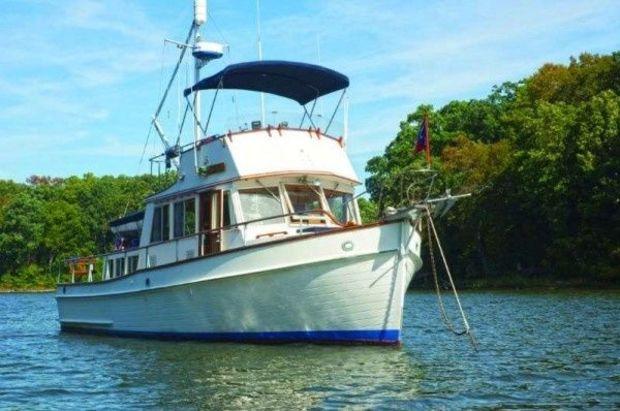
- Nitty Gritty Info about Your Boat
Length, draft, beam, height (air draft) and power requirement. The draft of your boat will determine routing your course. When you call a marina for a slip, you’ll be asked the length, draft, beam, and power requirements for your boat. Every time you approach a bridge, the air draft (with or without lowering the antenna) is a detail that allows you to either scoot beneath it or have to wait for an opening.
- Care and Feeding of Your Boat
Spare parts take up storage space aboard, but nothing makes you happier than having the fan belt or impeller needed to keep the boat running. Granted Fed Ex and UPS have made getting spare parts quicker than in the past, but having the part available for a handy captain or marina technician to install is even better.
- Dropping the Hook
We are very fond of anchoring out when there’s nothing ashore we want to see or visit, or we’ve had a long run and want to stop in a quiet cove for the night. The Waccamaw River in South Carolina, Canada’s North Channel, Lake Michigan’s Harbor Springs, and Lake Champlain’s Malletts Bay are some of our favorites. To do that we use a self-launching anchor windlass and 150 feet of chain that lets us sleep at peace. But if weather is threatening we opt to tie up at a marina, preferably one with floating docks where we’ll get a good night’s sleep and rest easy.
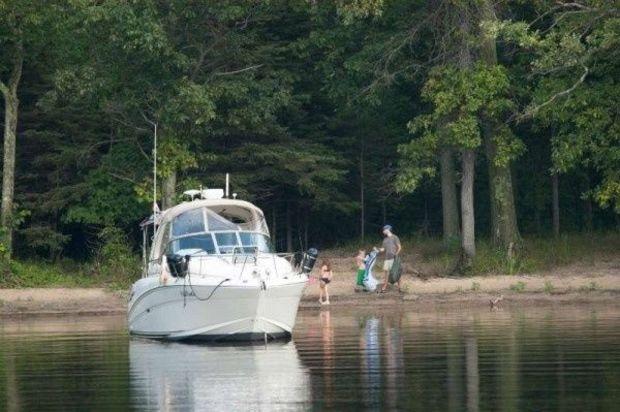
- Join a Cruising Group
The Marine Trawlers Owners Association (MTOA) is a national cruising organization with regional groups throughout the country that act as harbor ambassadors. When we dropped the hook in Atlantic City, NJ, one time, we were promptly greeted by two guys in an inflatable who saw our MTOA burgee and stopped by to say hello and ask “Need anything we can help you with?” In Southport, NC moments after we got a slip assignment at a marina, the MTOA regional captain called and said ”Hello Hamiltons, we’re from MTOA and want to say ‘welcome.’” When they heard the name of our boat, they looked us up in the MTOA directory. They offered us their car and couldn’t have been more friendly. As a member of a cruising organization like mtoa.net you’ll enjoy meeting like-minded boaters and sharing the enjoyment of cruising.
About the Authors: Gene and Katie Hamilton published "Coastal Cruising Under Power" and two e-books, "Two on a Trawler" and "Lessons Learned Cruising the ICW" available at
amazon.com. We’ve been thinking outside the proverbial cruising box and enjoyed several long-term cruises and met many others who are doing the same. Here’s what we’ve learned about arranging land lives and cruising for an adventure in progress that’s beyond your immediate home cruising grounds.
Not long ago in Edenton, NC, we met a Kansas couple on a catamaran who took two months to cruise the coast of the Tar Heel state with plans to return the next summer and cruise the Chesapeake Bay. They planned to work their way up the East Coast for many summers to come. As we meet cruisers on our travels, we’re amazed at how clever they are in arranging their lives to accommodate serious cruising time.
We’ve been thinking outside the proverbial cruising box and enjoyed several long-term cruises and met many others who are doing the same. Here’s what we’ve learned about arranging land lives and cruising for an adventure in progress that’s beyond your immediate home cruising grounds.
Not long ago in Edenton, NC, we met a Kansas couple on a catamaran who took two months to cruise the coast of the Tar Heel state with plans to return the next summer and cruise the Chesapeake Bay. They planned to work their way up the East Coast for many summers to come. As we meet cruisers on our travels, we’re amazed at how clever they are in arranging their lives to accommodate serious cruising time.
 Many cruisers we’ve met doing the Great Loop (‘Loopers,’ we’re often called) were making the 5000-mile cruise in segments over several years instead of one continuous yearlong adventure. Some were Europeans who allocated their free time to doing the Loop, leaving their boat and returning when their work schedule allowed.
A Texas couple we met loved the Great Lakes so much that they spent the summer there, hauled out for the winter in Michigan, and returned the following summer to resume their cruise. Many make the same plans to spend the summer in the Chesapeake Bay where they leave their boat in the fall and return the next spring.
On a recent cruise down the Intracoastal Waterway from our home port on the Chesapeake Bay, we tried something different. We took a one-way passage and enjoyed cruising some of the best the Florida Keys has to offer. We stayed at Boca Chita, Bahia Honda, and Islamorada and anchored in countless coves and keys and then shipped our downeast boat back to the Bay in the spring. We liked it, and all our worries about having a boat transported from Florida to Maryland were relieved when Early Bird arrived safe and sound at our boatyard.
The itinerant cruising style makes it possible to spend quality time in an area. Many like to live on the hook most of the time and use marinas for provisioning and shopping. Others prefer having a home base in a marina where they can get to know an area, easily take their dog for a walk, rent a car for sightseeing junkets, and of course have a safe and permanent place to tie up or leave their boat.
Many cruisers we’ve met doing the Great Loop (‘Loopers,’ we’re often called) were making the 5000-mile cruise in segments over several years instead of one continuous yearlong adventure. Some were Europeans who allocated their free time to doing the Loop, leaving their boat and returning when their work schedule allowed.
A Texas couple we met loved the Great Lakes so much that they spent the summer there, hauled out for the winter in Michigan, and returned the following summer to resume their cruise. Many make the same plans to spend the summer in the Chesapeake Bay where they leave their boat in the fall and return the next spring.
On a recent cruise down the Intracoastal Waterway from our home port on the Chesapeake Bay, we tried something different. We took a one-way passage and enjoyed cruising some of the best the Florida Keys has to offer. We stayed at Boca Chita, Bahia Honda, and Islamorada and anchored in countless coves and keys and then shipped our downeast boat back to the Bay in the spring. We liked it, and all our worries about having a boat transported from Florida to Maryland were relieved when Early Bird arrived safe and sound at our boatyard.
The itinerant cruising style makes it possible to spend quality time in an area. Many like to live on the hook most of the time and use marinas for provisioning and shopping. Others prefer having a home base in a marina where they can get to know an area, easily take their dog for a walk, rent a car for sightseeing junkets, and of course have a safe and permanent place to tie up or leave their boat.
 A California couple we know adopted a similar cruising style by wintering in the Bahamas where we met them. In the summer months, when they returned home, they hauled out in Georgia, a safe haven to leave a boat during hurricane season. Come winter they headed back to the Bahamas or Florida Keys.
We have friends who love their home in the Chesapeake Bay during the spring and fall, but spend the summer in Maine, and winter in Florida aboard their boat.
Many of these cruisers are retired but some like us continue to work while cruising, and it’s never been easier to manage a business with cell phone and WIFI connections available almost everywhere.
Tips and Advice:
A California couple we know adopted a similar cruising style by wintering in the Bahamas where we met them. In the summer months, when they returned home, they hauled out in Georgia, a safe haven to leave a boat during hurricane season. Come winter they headed back to the Bahamas or Florida Keys.
We have friends who love their home in the Chesapeake Bay during the spring and fall, but spend the summer in Maine, and winter in Florida aboard their boat.
Many of these cruisers are retired but some like us continue to work while cruising, and it’s never been easier to manage a business with cell phone and WIFI connections available almost everywhere.
Tips and Advice:

